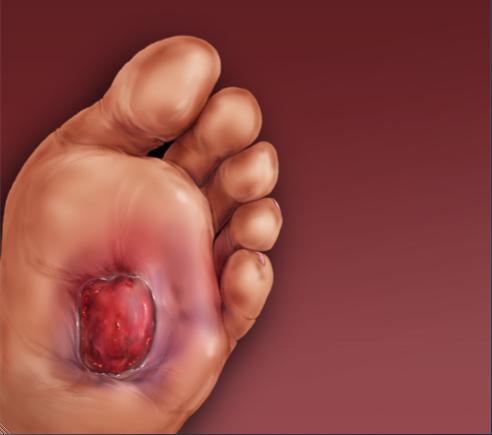Diabetic Nephropathy
The main factors of the disease are consideredchronic hyperglycemia, prolonged course of diabetes mellitus, dyslipidemia, arterial hypertension. Diabetic nephropathy is characterized by damage to the glomerular apparatus of the kidney. The disease is more often found in men and people whose type 1 diabetes developed before the age of 15. Diabetic nephropathy develops in 30 percent of cases of diabetes mellitus.
Early clinical manifestation of the disease canexpressed in arterial hypertension. Diabetic nephropathy in later manifestations is expressed in renal failure and nephrotic syndrome. Screening for people with diabetes, provides an annual test for nephropathy five years after the onset of the disease. An annual study of the creatinine level is also needed to calculate the GFR, that is, the glomerular filtration rate. Diabetic nephropathy in the initial stages is characterized by an increase in GFR, which decreases with the development of renal failure.
Nephropathy of the kidneys reaches its peak18-20 years after the onset of the onset of diabetes mellitus. Evidence of the irreversibility of such a process as nephropathy in diabetes mellitus is proteinuria. Approximately 10-12 years after the beginning of the course of proteinuria, uremia develops, which leads to a state of chronic kidney failure.
The main conditions for the prevention of nephropathyare maintenance in norm or rate of arterial pressure and indemnification of a diabetes. It is recommended to reduce the intake of food containing proteins. Patients are assigned the use of angiotensin receptor blockers and ACE inhibitors. When
arterial hypertension, these drugs are prescribed inantihypertensive doses. These drugs prevent the transition of microalbuminuria to proteinuria. In some cases, such therapy, combined with the compensation of diabetes, leads to the elimination of microalbuminuria. Recommended intake of salt is not more than 3 grams per day.
In the stage of chronic renal flowinsufficiency should be carried out correction of sugar reduction therapy. Patients with type 2 diabetes mellitus are transferred to insulin therapy, as taking tablets
can lead to the development of severe hypoglycemia. In the vast majority of patients, the need for insulin decreases, since the kidneys are the main place of its metabolism.
Increased creatinine raises the question ofsurgical and extracorporeal methods of treatment. Surgical methods include kidney transplantation, and extracorporeal means peritoneal dialysis and hemodialysis.
In half of patients with diabetes mellitustype in the detection of proteinuria, the development of renal chronic failure is observed for 10 years. Diabetic nephropathy is the cause of death of 15% of patients due to renal chronic insufficiency in persons younger than 50 years.
To date, nephropathy is the maincause of death and high disability of patients with diabetes mellitus. Prevention of nephropathy is the control of blood pressure, when the indices do not exceed 130/85. It is necessary to completely abandon smoking, since nicotine leads to damage to the inner layer of the vascular walls and has a common vasoconstrictive effect. A prerequisite for the prevention of diabetic nephropathy is maintaining blood sugar within normal limits and normalizing blood pressure. At a specific stage of the disease, a special diet with a daily protein content of no more than 30% of the total diet is prescribed.
</ p>

